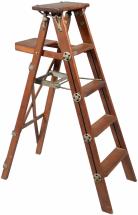Mechanical Scaffolding | Part 3 of 3
1 June, 2012 § Leave a comment
When I write an article or paper I don’t want there to be any mechanical errors. In other words, I want my piece to be structurally, and grammatically sound as well as having the correct punctuation. So what do I mean by mechanical scaffolding? Mechanical scaffolding is the checklist that you go through in your head to make sure that you have written a mechanically sound work. However, while chronological scaffolding is like a ladder, mechanical scaffolding is everything from the iron beams that hold everything together to the last coat of paint. The idea is that in order to have a finished product that elevates your reader’s imagination and understanding you must have solid mechanical scaffolding.
Any Questions? Please ask them and I’ll be happy to either briefly answer them in a reply or go into further detail in up and coming posts.
Changing Bulbs | Part 2 of 3
11 May, 2012 § 1 Comment
Chronological scaffolding is when what I write reflects who I have been reading. The chronological scaffolding of your work is like the ladder that changes the light bulb that shines a brighter light on your work for your reader’s/viewers benefit. It is the chair that gives a leg up to those who are a little too short to reach the top shelf without a little help. In essence: it is your favorite authors, poets, screen writers, directors, painters, sculptors and so on and so forth. Of the two kinds of scaffolding, chronological scaffolding is the kind that you do not mind to see as you are walking through the halls of a fine establishment, because you know it means that due diligence has been made to ensure a quality outcome.
Next Friday: Mechanical Scaffolding
Don’t forget to read the first in the triology: Intro to Scaffolding
Ah Bet E’ll Fall | Part 1 of 3
4 May, 2012 § 3 Comments
 In September of 1932 Charles Clyde Ebbets took a picture that ended up defining his career. It was called Lunchtime atop a Skyscraper. Its subjects were the fearless construction men who built the Rockefeller Center in New York City having their tea and cigarettes in a break room that would make even the most lenient of OSHA officers go into cardiac arrest. As an art receiver, when I saw this picture my stomach turned inside out for those men but I didn’t give much thought to the photographer himself. After all, the construction workers are the ones out on the crossbeam, dangling their leathers hundreds of thousands of feet in air. The point is that I never questioned Mr. Ebbets’s safety when I looked at this picture.
In September of 1932 Charles Clyde Ebbets took a picture that ended up defining his career. It was called Lunchtime atop a Skyscraper. Its subjects were the fearless construction men who built the Rockefeller Center in New York City having their tea and cigarettes in a break room that would make even the most lenient of OSHA officers go into cardiac arrest. As an art receiver, when I saw this picture my stomach turned inside out for those men but I didn’t give much thought to the photographer himself. After all, the construction workers are the ones out on the crossbeam, dangling their leathers hundreds of thousands of feet in air. The point is that I never questioned Mr. Ebbets’s safety when I looked at this picture.

I imagined his feet firmly planted on a platform taking pictures of people who were decidedly in a more precarious situation. The truth is that Charles Ebbets was in as much danger of falling as the men who debuted in this historic photograph.
The concept of being two hundred thousand feet above 6th and 49th fashioning art that makes you look like you have your feet firmly planted on a wrought iron platform is what I like to call the principle of scaffolding. Without scaffolding no artist or author could get high enough to snap, paint or write about the situations that peak people’s interests. There are two types of scaffolding that an artist or an author has to deal with. The first is the chronological scaffolding of his or her influences and the second is his or her mechanical scaffolding.
Continued Next Friday: Chronological Scaffolding

